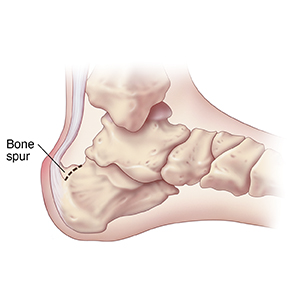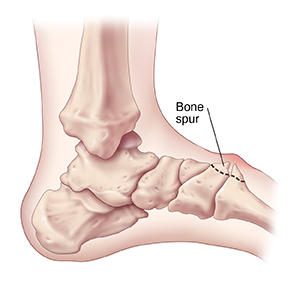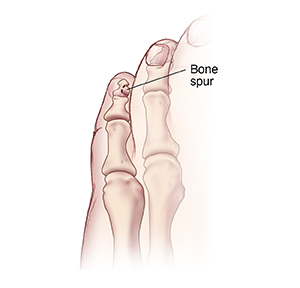A bone spur is an extra bone growth. It can make walking and wearing shoes painful. Spurs may grow on any of the foot joints. These spurs may form a bump on the top of the foot. Bone spurs may also form on your toe. Sometimes, a spur can form where the Achilles tendon connects to the heel bone. There are several nonsurgical treatments for bone spurs. But if these aren't effective, surgery can be considered.
Spur on the back of the heel
The heel spur is removed, and the Achilles tendon is repaired. Your foot will be placed in a cast. To keep you from bearing weight on this foot, you will need crutches for several weeks.
Midfoot joint spur
To get rid of the bump, the spur is removed on both sides of the joint. You can bear weight on your foot right after surgery. You'll need to wear a surgical shoe for a few weeks.
Toe spur
Removing a toe spur involves making only a small skin incision. A tiny power rasp (similar to a dental burr) or a special file is inserted to smooth the bone. After surgery, your foot will be bandaged. But you can often walk on it right away. In some cases, you may need to wear a surgical shoe for a few weeks.
Featured in




